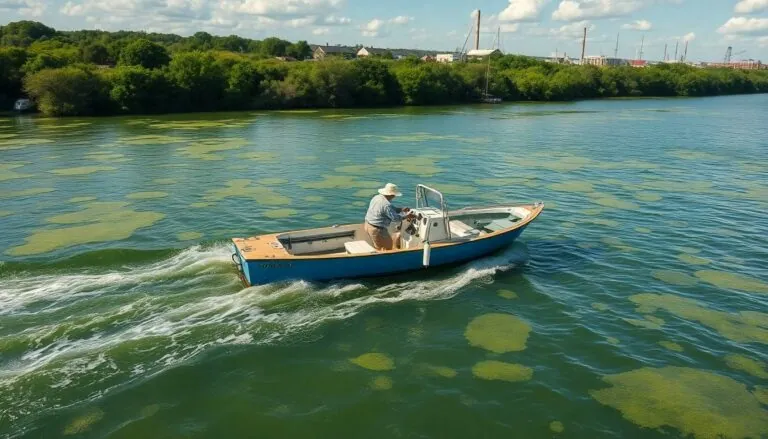Climate change might sound like a buzzkill, but it doesn’t have to be! In a world overflowing with data, climate change infographics offer a colorful escape from endless numbers and graphs. They pack a punch, turning complex information into eye-catching visuals that even your pet goldfish could understand.
Table of Contents
ToggleOverview of Climate Change Infographics
Climate change infographics serve as powerful tools for visual communication. These visuals condense complex information, making it accessible to diverse audiences. Various formats, such as charts, graphs, and images, enhance understanding of climate impacts and solutions.
Data-driven visuals can illustrate specific statistics. For instance, an infographic might show that 1.2 million species face extinction due to climate change. Highlighting key findings encourages engagement and raises awareness about critical issues.
Infographics can convey the effects of climate change on different ecosystems. One visual may depict rising sea levels that threaten coastal communities, while another could showcase temperature increases affecting agriculture. By illustrating these consequences, infographics inspire action and foster understanding of the urgency of climate issues.
Graphics can also present potential solutions to climate change. For example, infographics often highlight renewable energy sources like solar and wind, emphasizing their benefits. By showcasing the emission reductions associated with these technologies, they persuade individuals and organizations to adopt more sustainable practices.
Collaborative efforts in creating these visuals often enhance their impact. Nonprofits, educational institutions, and businesses frequently partner to produce high-quality, informative infographics. Such partnerships can leverage expertise and resources to reach broader audiences.
Climate change infographics simplify complex data into engaging visuals. They emphasize relevant statistics, illustrate pressing challenges, and promote actionable solutions. By making information accessible, infographics play a vital role in raising awareness and inspiring change.
Importance of Visual Data Representation

Climate change infographics play a crucial role in transforming complex data into accessible visuals. They simplify intricate information, making it easier for people to understand the urgency of climate issues.
Benefits of Infographics in Climate Communication
Infographics condense large amounts of information into digestible formats. Presenting statistics like 1.2 million species at risk underscores the severity of climate change. Visual tools enhance retention, allowing audiences to remember key messages more effectively. Charts demonstrate trends, and graphs visualize changes, making connections clear. Instructions on potential solutions show renewable energy’s advantages, guiding informed decision-making. Overall, infographics serve as effective communication tools in conveying vital climate information.
Engaging Diverse Audiences
Visual representations cater to various learning styles, reaching a broader audience. Different demographics resonate with engaging visuals, facilitating understanding across age groups and backgrounds. Infographics can be shared easily on social media, amplifying their reach. Dynamic designs attract attention, encouraging viewers to engage further with the subject. As more people interact with these visuals, awareness around climate change grows, prompting conversations and action. Diverse audiences become informed, empowered to make environmentally conscious choices through accessible visual data.
Popular Climate Change Infographics
Climate change infographics effectively communicate critical information on climate issues. Many organizations create compelling visuals that capture attention and inform audiences.
World Resources Institute
World Resources Institute produces impactful infographics that focus on sustainable solutions. Their visuals illustrate the carbon footprint of various industries, showcasing the urgent need for change. Through engaging designs, they highlight the role of forests in carbon sequestration, emphasizing conservation efforts. With data on renewable energy adoption, these infographics encourage shifts toward sustainable practices. Furthermore, their graphics often provide context on water resources, conveying the interconnected nature of climate change challenges.
NASA’s Climate Change Visualizations
NASA’s climate change visualizations serve as authoritative resources on global warming. Their infographics utilize satellite data to depict temperature changes over time, illustrating alarming trends. Engaging visuals demonstrate the melting of polar ice caps, offering clear evidence of climate disruption. By presenting data on greenhouse gas emissions, NASA emphasizes the human impact on climate systems. Additionally, their graphics explain the potential consequences of rising sea levels on coastal communities, warning of future risks.
Creating Effective Climate Change Infographics
Creating impactful climate change infographics involves incorporating key elements that enhance clarity and engagement. These visuals should include accurate data sourced from reputable organizations, effective use of color contrasts to highlight critical information, and clear labeling for better comprehension. Maintaining a logical flow of information helps audiences follow the narrative easily. Storytelling elements can further connect emotionally with viewers, making themes of urgency and importance resonate.
Key Elements to Include
Incorporate essential elements such as compelling statistics, visual representations, and concise text. Use images to depict climate impacts, like severe weather patterns and glacier melts. Highlight case studies showcasing successful environmental initiatives, reinforcing positive actions. Utilize icons and symbols familiar to your audience for easier recognition. Employ color schemes that evoke the right emotions, fostering awareness and urgency.
Tools for Designing Infographics
Many tools assist in designing engaging infographics. Websites like Canva and Piktochart offer user-friendly templates and design elements tailored for varying skill levels. Adobe Illustrator provides advanced features ideal for professional designers. Google Charts allows for easily embedding interactive graphs. Utilizing these resources streamlines the process of translating complex data into visually appealing formats, enhancing overall impact.
Climate change infographics are essential tools for communicating critical information in a clear and engaging manner. By transforming complex data into visually appealing formats, they not only enhance understanding but also inspire action among diverse audiences. The effectiveness of these visuals lies in their ability to simplify intricate issues while highlighting urgent statistics and potential solutions.
Organizations like the World Resources Institute and NASA exemplify how impactful infographics can be in raising awareness about climate challenges. As more individuals and groups embrace these visual communication strategies, the potential for fostering meaningful dialogue and encouraging sustainable practices continues to grow. Ultimately, climate change infographics empower people to grasp the significance of their choices and contribute to a more sustainable future.





